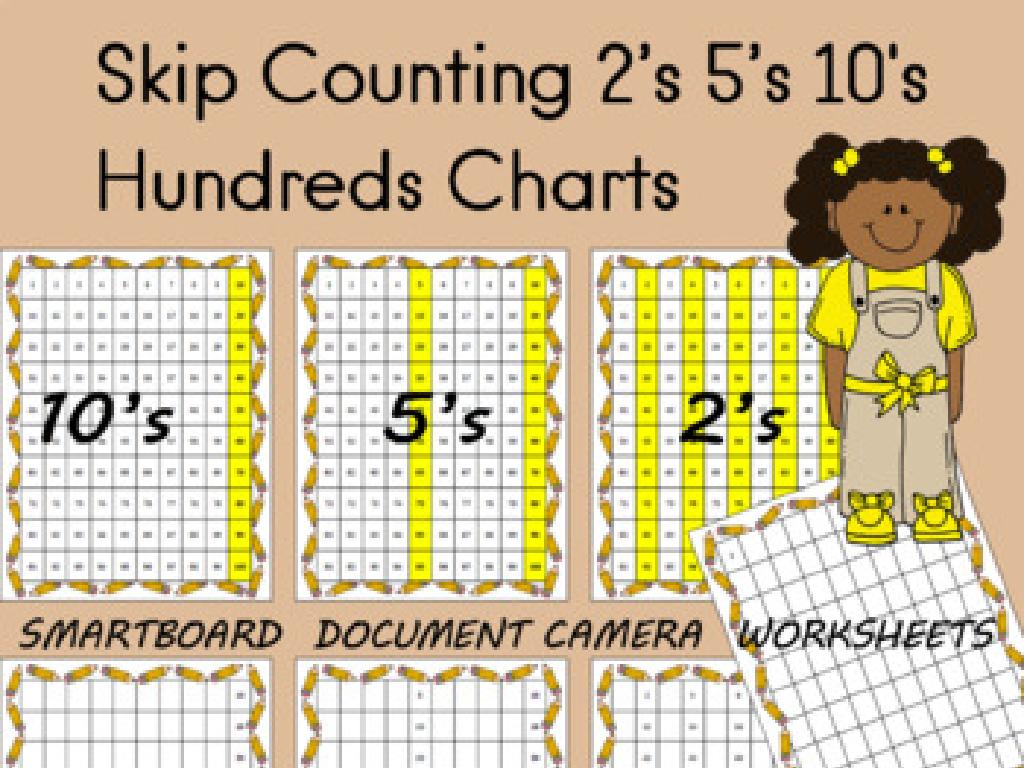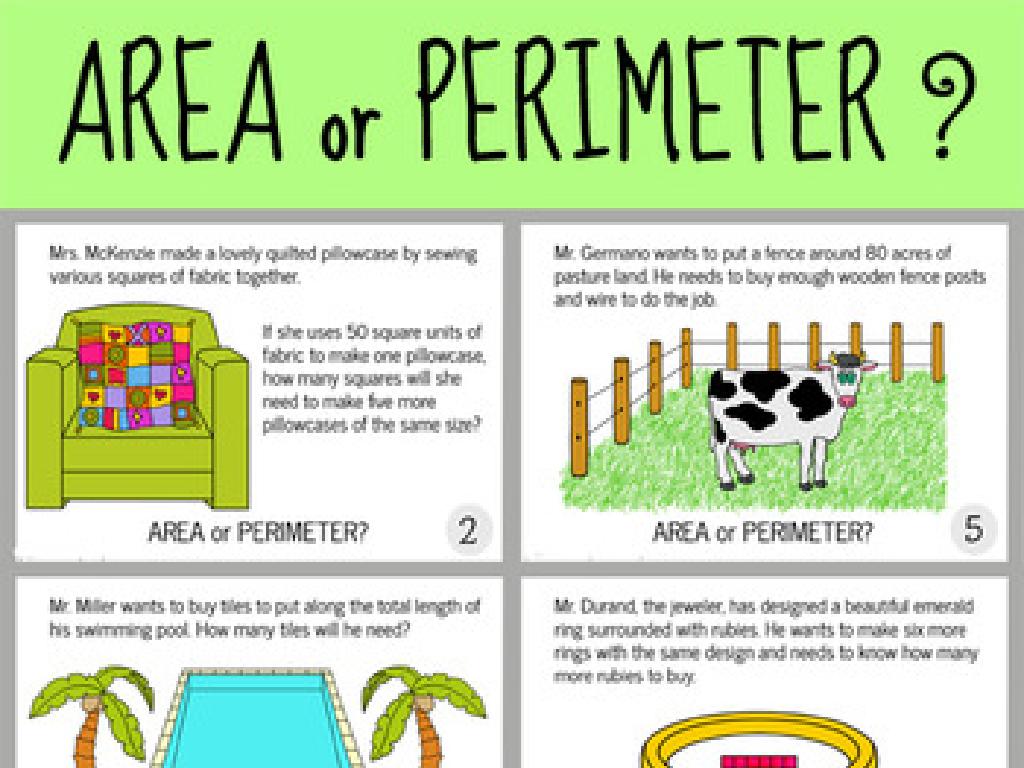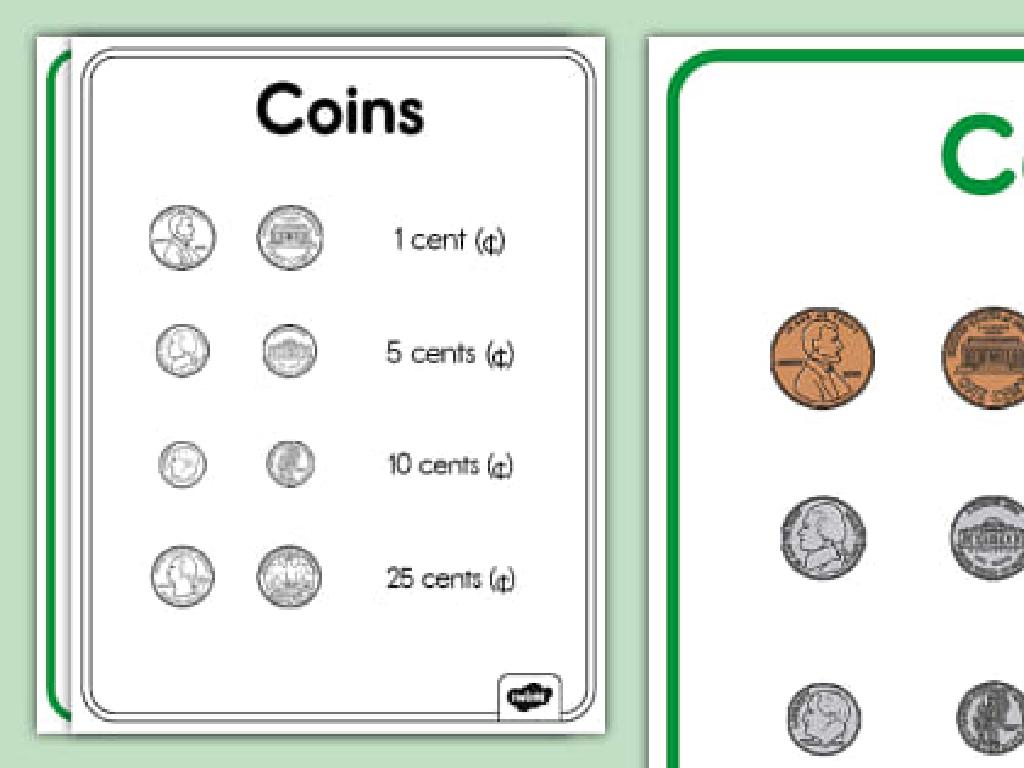Add Using Properties
Subject: Math
Grade: Third grade
Topic: Addition Properties
Please LOG IN to download the presentation. Access is available to registered users only.
View More Content
Exploring Addition Properties
– Learn how addition works
– Explore commutative property
– If 3 + 5 = 8, then 5 + 3 = 8 too!
– Discover associative property
– (2 + 3) + 4 = 2 + (3 + 4)
– Engage with interactive activities
|
This slide introduces the fundamental properties of addition to third-grade students. Begin by explaining that addition is more than just combining numbers; it follows specific rules or properties that make it easier and fun. Introduce the commutative property, which means numbers can be added in any order and the result will be the same. Use tangible examples like adding different colored blocks to illustrate this point. Next, explain the associative property, which shows that no matter how we group numbers when adding, the sum remains the same. Use simple, relatable examples and encourage students to try grouping numbers differently to see the property in action. Incorporate engaging activities such as group work or hands-on exercises to reinforce these concepts. The goal is for students to understand and apply these properties of addition in various mathematical and real-life situations.
Understanding Addition Properties
– What are properties in math?
– Rules that help us add numbers quickly
– Three main addition properties
– Commutative, Associative, and Identity
– Properties make math fun!
– They help us add faster and with ease
– Practice using properties
|
This slide introduces the concept of properties in mathematics, specifically focusing on addition properties for third-grade students. Properties are like shortcuts that help us add numbers more efficiently. The three main properties to focus on are the Commutative Property (changing the order of numbers doesn’t change the sum), the Associative Property (changing the grouping of numbers doesn’t change the sum), and the Identity Property (adding zero to a number gives the number itself). Emphasize how these properties can make addition faster and more enjoyable. Encourage students to practice these properties with examples and class activities to solidify their understanding.
The Commutative Property of Addition
– Commutative Property explained
– It means we can add numbers in any order
– Changing the order of numbers
– Example: 4 + 5 equals 5 + 4
– Both give us the same answer: 9
– Practice with more examples
– Let’s solve addition problems together!
|
The Commutative Property is a fundamental concept in addition, allowing students to understand that the order in which two numbers are added does not affect the sum. Start by explaining the property clearly and show that when we switch the numbers around, the answer remains the same. Use simple examples like 4 + 5 and 5 + 4 to illustrate this point. Encourage the students to come up with their own examples and to practice this property with different numbers. This will help them to become more flexible in their thinking about addition and to see patterns in numbers. During the practice, walk around the classroom to ensure that students are correctly applying the property and provide assistance as needed.
The Associative Property of Addition
– Understanding Associative Property
– It allows us to change the grouping of numbers
– Grouping numbers differently
– Example: (2 + 3) + 4 = 2 + (3 + 4)
– Both ways equal 9, showing grouping doesn’t change the sum
– Sum remains constant regardless of grouping
|
The Associative Property is a fundamental concept in addition that allows flexibility in how numbers are grouped. It states that no matter how you group the numbers being added, the sum remains the same. For example, (2 + 3) + 4 equals 9 and 2 + (3 + 4) also equals 9. This property is useful for simplifying calculations and understanding that the order of operations can vary without affecting the outcome. Encourage students to practice with different groupings and to recognize that this property only applies to addition (and multiplication), not subtraction or division.
The Identity Property of Addition
– Identity Property explained
– When you add 0 to any number, the value stays the same.
– Adding zero to a number
– Example: 7 + 0 = 7
– It shows that any number plus zero will equal the original number.
– Zero doesn’t change the number
– This means the number’s identity is unchanged by 0.
|
The Identity Property of Addition is a fundamental concept in mathematics that states adding zero to any number will result in the same number. It’s important for students to understand that zero is the ‘do nothing’ number in addition. When we add zero to a number, it’s like adding nothing at all, so the number stays the same. This property helps in simplifying equations and understanding the role of zero in arithmetic operations. Encourage students to think of zero as a placeholder that doesn’t contribute any value when added to other numbers. Use additional examples like 5 + 0 = 5 or 100 + 0 = 100 to reinforce the concept.
Practice Time: Addition Properties
– Let’s solve problems together
– Use properties to find solutions
– For example, use the Commutative Property to rearrange numbers
– Work as a class, help each other
– Any property can be your tool
– Commutative, Associative, or Identity properties
|
This slide is designed for an interactive class activity where students will practice applying different addition properties to solve problems. The teacher will guide the class through several examples, encouraging students to participate and use the Commutative, Associative, or Identity Property to find the sum. It’s important to foster a collaborative environment where students feel comfortable to suggest solutions and help their peers. The teacher should prepare a set of problems of varying difficulty and ensure that each student understands how to apply the properties. Possible activities include solving problems on the board, working in small groups, or using manipulatives to visualize the properties in action.
Class Activity: Property Pairs Game
– Play the Property Pairs game
– Match problems with properties
– Associative, Commutative, or Identity
– Collaborate with your partner
– Find as many pairs as possible
|
This interactive class activity is designed to help students understand and apply the properties of addition through a matching game. Students will work in pairs to match addition problems with the correct property: Associative, Commutative, or Identity. Provide students with a set of addition problems and a list of properties on cards. They will then work together to find the correct pairs. For example, (2 + 3) + 4 = 2 + (3 + 4) demonstrates the Associative Property. Encourage students to discuss each match with their partner to reinforce their understanding. Offer guidance as needed and consider rewarding the pair that finds the most correct matches to foster a friendly competitive environment.
Conclusion: Mastering Addition Properties
– Congratulations on learning addition properties!
– Remember, properties are tools for easier addition
– Like shortcuts, they help us add numbers quickly
– Keep practicing to become an expert
– Practice with different numbers and in word problems
– You’re on your way to mastering math!
|
This slide wraps up the lesson on addition properties by congratulating the students on their hard work and encouraging them to continue practicing. Emphasize that understanding these properties is like having a set of shortcuts that make adding numbers together much faster and easier. Encourage them to apply these properties in various situations, including word problems, to become confident in their use. Remind them that mastery comes with practice and that they are well on their way to becoming addition properties experts.






